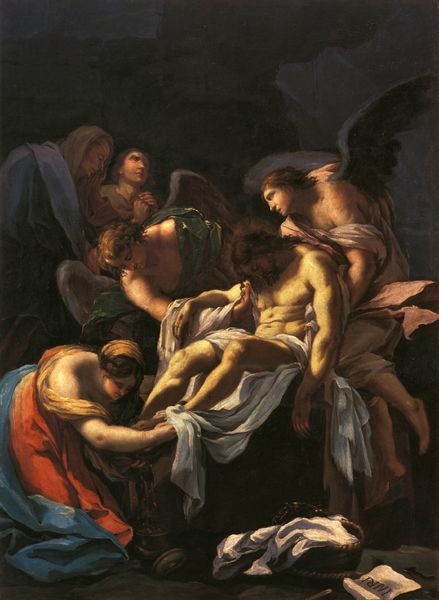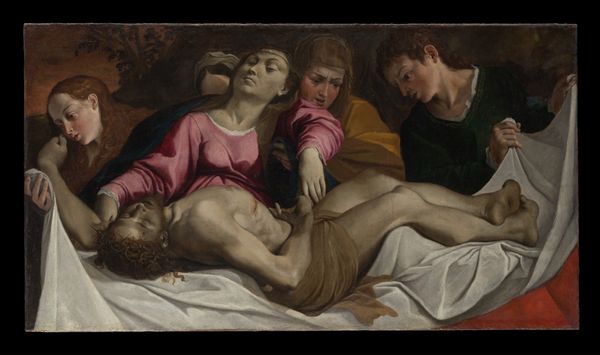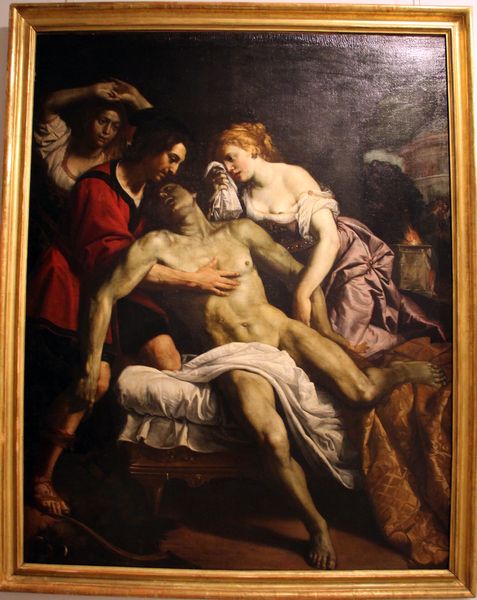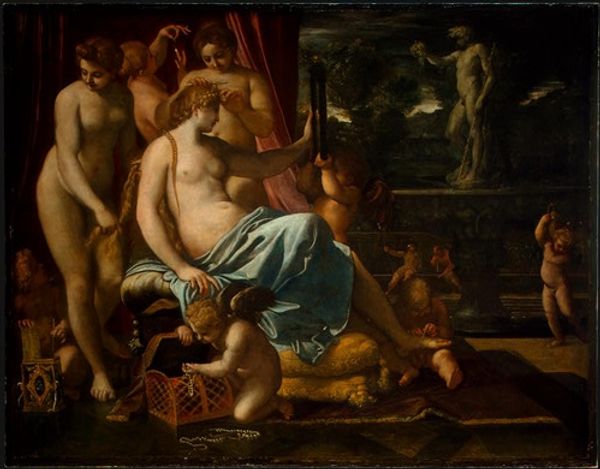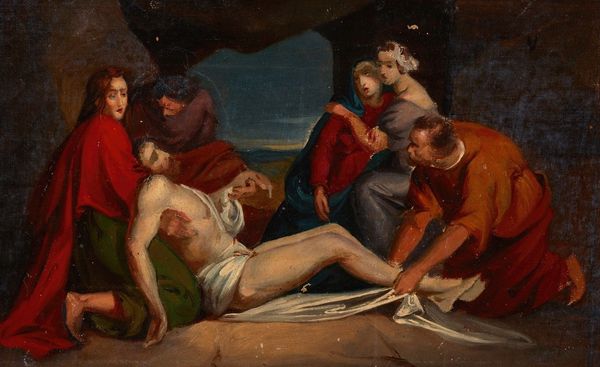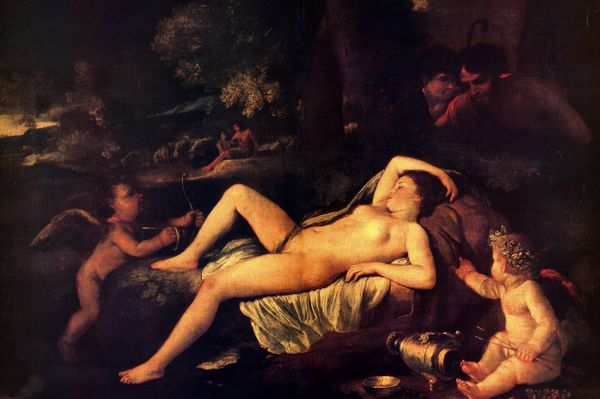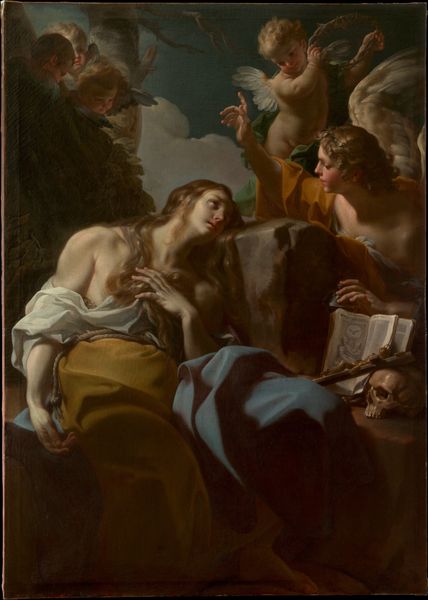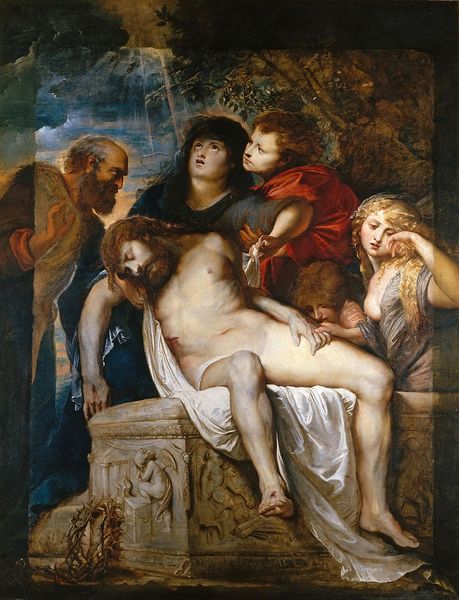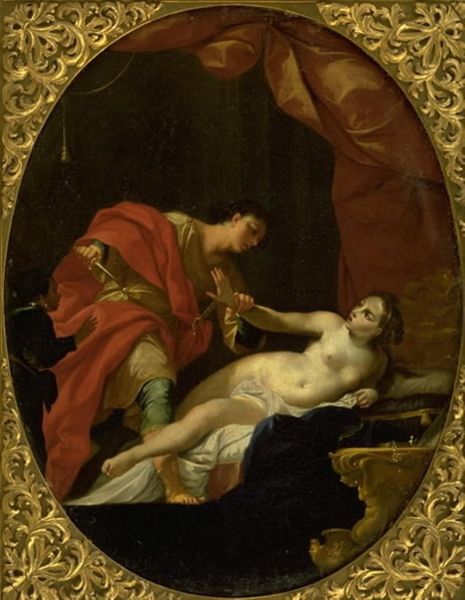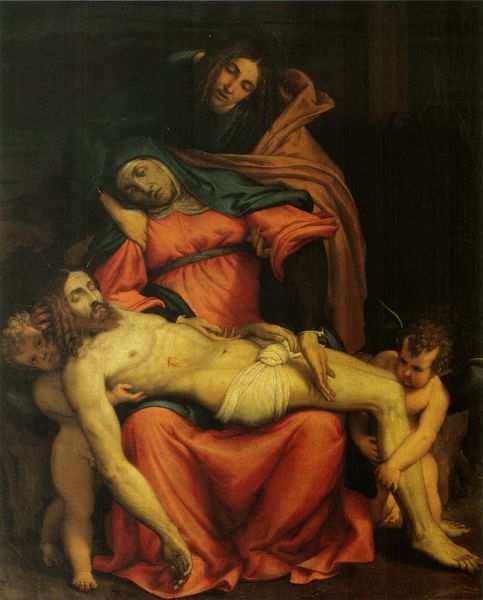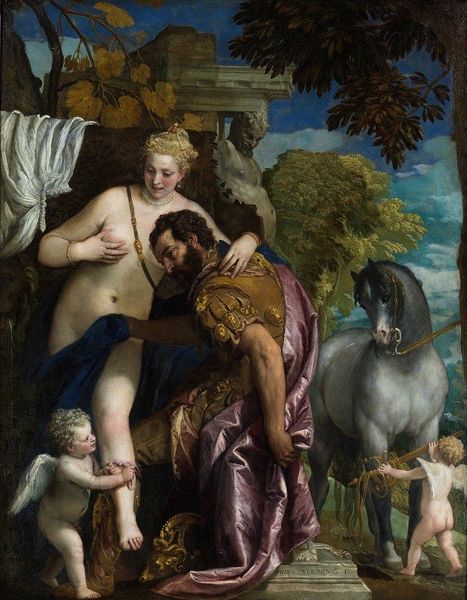
painting, oil-paint
#
painting
#
oil-paint
#
mannerism
#
figuration
#
11_renaissance
#
costume
#
history-painting
#
nude
Copyright: Public domain
Editor: We're looking at Alessandro Allori's "The Body of Christ Anointed by Two Angels," an oil painting from 1593. It's strikingly staged; Christ's body is almost theatrical. What historical or cultural contexts are bubbling beneath the surface of this piece? Curator: Good question! Allori painted this during the late Mannerist period, a time of religious and political upheaval. Think about the Council of Trent and the Counter-Reformation. The Church was very concerned with how religious subjects were depicted. Editor: So, how does that influence this image? Is there anything the artist did to conform to social pressure? Curator: Well, consider the carefully arranged composition, the emphasis on Christ's idealized body. The anointing ritual being performed by the angels creates an intensely devotional mood. However, mannerism allows the artist to flaunt expertise in anatomical form with refined grace. The Church wanted clarity and piety, and artists navigated a balance with artificiality and grace. What do you think is more pronounced in Allori’s painting? Editor: I see both actually, the devotion is apparent. Still, the posing seems, well, contrived almost. Did that kind of thing affect how the public perceived these kinds of paintings? Curator: Absolutely! Mannerism was very much an art of the elite, appealing to a sophisticated audience who appreciated artistic invention and intellectual references. A broader audience may have preferred something simpler and more direct. It is something to think about when seeing works made for popular devotion. Editor: That's a great perspective! I didn't consider the different levels of audiences it may be designed to address. Curator: Exactly! Considering this intersection of power and the production of the image definitely enriches my understanding of Allori's painting and its time.
Comments
No comments
Be the first to comment and join the conversation on the ultimate creative platform.

